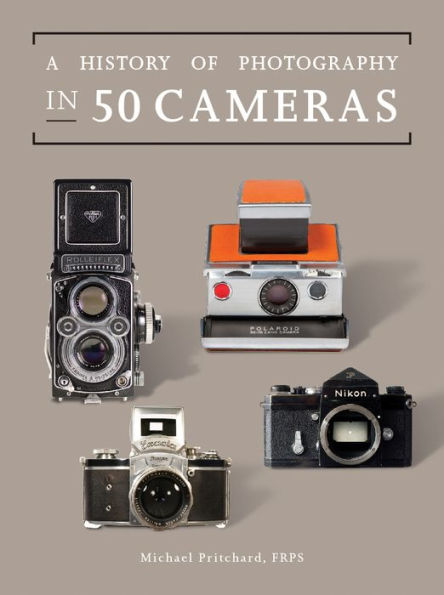Introduction
The ability to capture a moment in a photograph, to freeze it in time, has fascinated us ever since the daguerreotype process was announced in 1839. Back then, photography was the pursuit of a select few; today, the ubiquity of camera phones has turned us all into photographers. As these nanodevices attest, the history of photography, perhaps more so than any other art, is also a history of technology, one best revealed in the very vehicle that makes it possible — the camera. And yet it is also a history of people — the people who invented the cameras, the photographers who used them, and the subjects and events they photographed.
The story of the camera has been one of simplification, portability and the greater use of technology to ensure that the user can capture the image they desire. The camera obscura was the simple artists' drawing aid that, with the development of optics and chemistry, evolved into the photographic camera. The transition from the daguerreotype and calotype processes to wet-collodion in the 1850s and from collodion to dry plates in the 1880s, and the move to film from the 1890s, all left their mark on how the camera looked and handled. Then came the seismic transformation of photography from traditional silver-based emulsions to CCD — the digital equivalent of film — and other digital technology in the mid-1990s, which affected the shape and size of the camera and, crucially, where and when photographs were taken and how they were shared.
These continual improvements and developments have meant that the type of photographs being taken, and the type of people taking them, has been in constant flux too. The technical skill needed for photography for much of the 19th century ensured that most people visited commercial portrait studios if they wanted their portrait taken. The resulting pictures were posed and formal, reflecting the long exposure times and a style of portraiture dictated by an artistic tradition. The growth of popular photography from the later 1890s, with the introduction of more "user-friendly" cameras such as the Kodak Brownie in 1900, changed this dynamic. People began to take more pictures for themselves. This coincided with, and helped to reinforce, an increasing informality in the types of pictures people took and where they took them — a trend that continues in the present day.
The field of photojournalism has also adapted itself to the camera technology available. Robert Capa, for example, would never have been able to take his dramatic images of the Normandy beach landings using plates or the large cameras of the 1850s, yet the quiet, deliberately made images of the Crimean War taken by Roger Fenton in 1855 were equally powerful to the mid-19th century Victorians. Arresting digital images — both still and moving — from the recent wars in Iraq and Afghanistan were made possible by changing technology and of course by the skill and bravery of the photojournalists. Reportage of events such as the Arab Spring, the Haiti earthquake of 2010 and the Japanese tsunami of 2011 has increasingly relied on images taken by individuals on the ground using their camera phones, often within moments of them happening, with social media sites being used to circulate images of the events themselves.
This book seeks to tell the story of the camera through 50 landmark models, from the first wood boxes made for pioneers such as Talbot and Daguerre, to today's digital SLR cameras and camera phones. It is by no means a definitive list, nor does it pretend to be. Rather, it is a selection to spark the interest of camera enthusiasts and provide fuel for further discussion and exploration. Included are classics such as the Leica, Nikon and Hasselblad used by professional photographers, as well as amateur staples: the humblest of box cameras, the Brownie, and the single-use, or disposable camera. Alongside these are speciality cameras for stereoscopic or 3-D photography, panoramic or wide-angle work, and the Polaroid for instant pictures. Some of photography's oddities have also made the list, with novelty cameras in the shape of books and guns, and ingenious spy cameras.
Photographs within each chapter show not only the cameras themselves, but also samples of the images made with them, giving a flavor of how each new technology led to new ways of creating photographs, from early Kodak photos and 3-D View-Master images to the up-close and vivid depictions of war taken on the Contax. The story of each camera is intertwined with those of the people who used it, from Weegee and his Speed Graphic to Cartier-Bresson and the Leica's role in the invention of photojournalism, proving that in the hands of individual photographers, particular cameras have come to represent unique styles of depiction.
In the digital age, where almost everyone owns a smartphone that incorporates a camera, there is always an opportunity to take a photograph. Smartphone apps such as Snapchat, social media sites and new devices such as Google Glass and others yet to come offer new ways of creating still and moving images — and instantly sharing them. For many people, their smartphone is their only camera, and this trend looks set to continue. In a world where the best-selling cameras are phones, dedicated cameras may seem destined to become speciality tools. Yet the legacy of older cameras and photography's analog years lives on, not just in museums and collectors' hordes, but in apps like Instagram and Hipstamatic, showing that classic cameras exert an enduring fascination.










